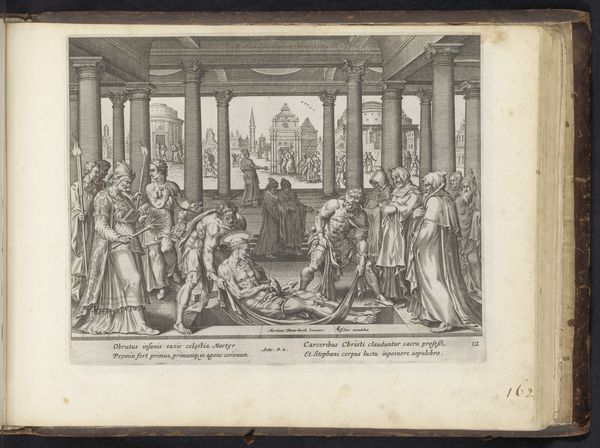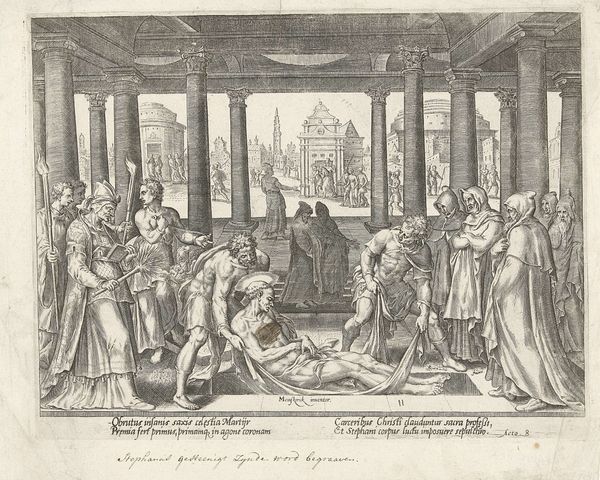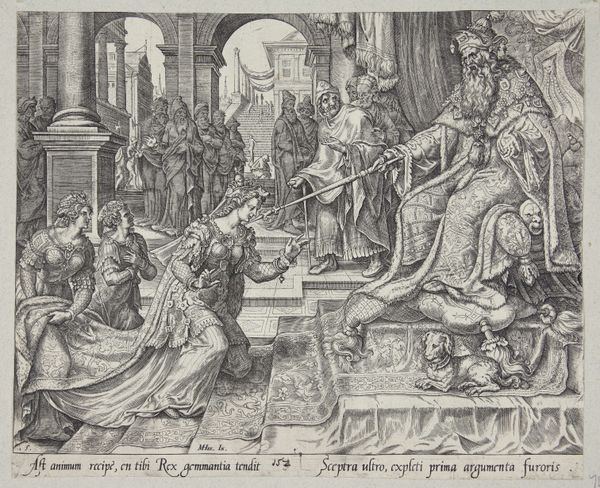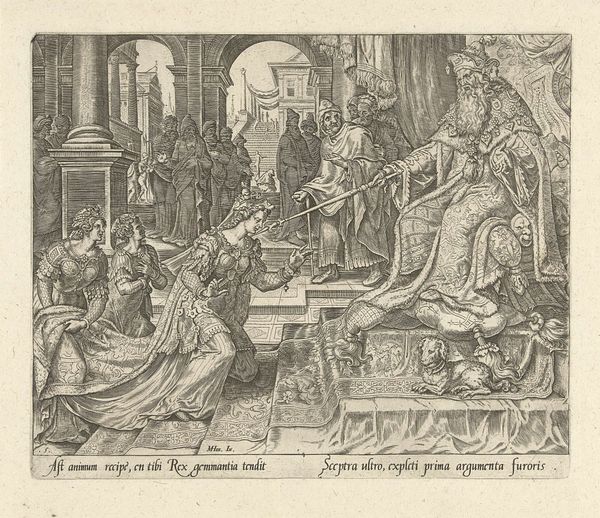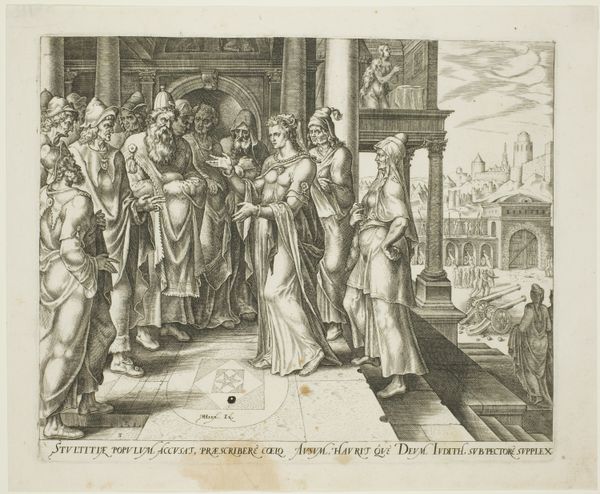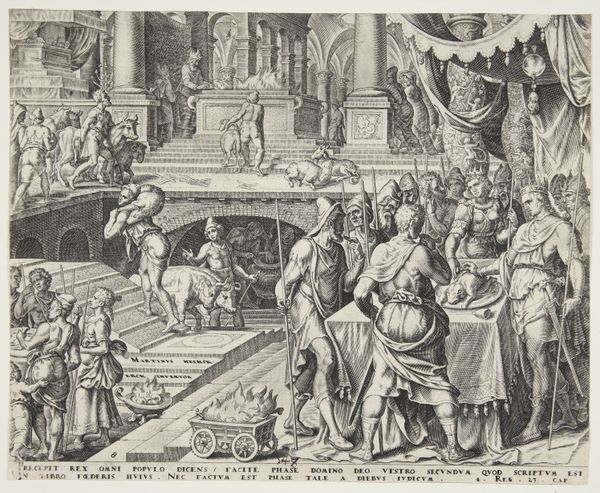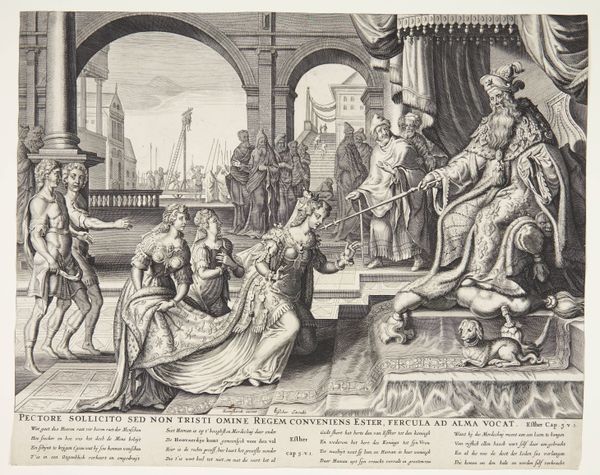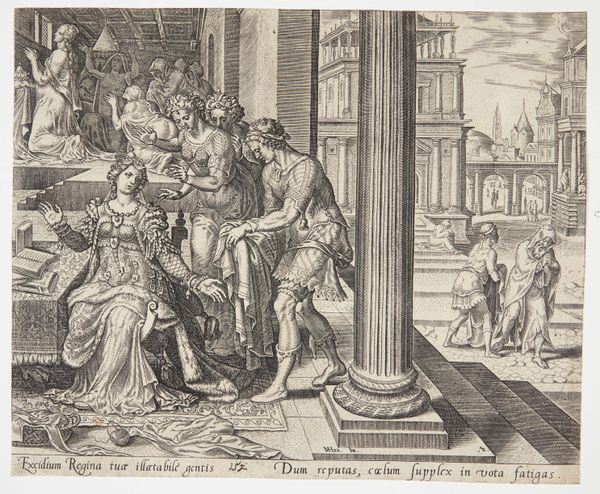
print, engraving
#
narrative-art
# print
#
perspective
#
figuration
#
history-painting
#
northern-renaissance
#
engraving
Dimensions: 209 mm (height) x 270 mm (width) (plademaal)
Curator: Looking at Philips Galle’s 1575 engraving, “The Burial of St. Stephen,” I’m struck by the quiet solemnity achieved within such intricate detail. The architecture dominates, framing the intimate burial scene, yet it almost dwarfs the figures. What is your immediate response to the work? Editor: There’s a pronounced stillness in this image. The stark monochrome of the engraving throws the scene into sharp relief. You can almost feel the texture of the fabric they're using to lower St. Stephen’s body – the sheer physical act of handling the weight. And it all comes from carved metal! Curator: Indeed, the material process behind engravings significantly impacted the artwork’s distribution. Prints democratized art, disseminating imagery like this throughout society. The subject, St. Stephen, was an early Christian martyr whose story had real socio-political weight. Galle, through prints, participates in this public role of art. Editor: And consider the skill involved! Each line carefully etched, thousands of them perhaps, to render this weighty moment. The engraver isn’t just illustrating a story; they are involved in an act of labor-intensive, skilled production. What would have the workshop looked like where it was made? What type of tools were being employed and what was its final use- value as art? Curator: It's vital to consider where it was exhibited – probably circulated among private collectors or monastic settings. The art style situates this engraving squarely in the Northern Renaissance tradition of detailed representation. Observe the orthogonal perspective of the colonnade receding into space, a key device utilized to enhance the narrative’s stage. It is clear why narrative artwork was becoming extremely popular in those settings! Editor: Absolutely, and even the contrast plays a significant role. Look at St. Stephen, all muscle, contrasted against the cloth, so soft and pliable! What was this made with? It reminds us that materials convey messages as powerfully as the figuration does. You need good linen for burying your saints properly! Curator: Right, the act of memorializing Stephen, embedding him within both theological and art-historical dialogues. The act of circulation and visibility adds layers to understanding art’s function in history. Editor: Precisely. Looking closely reveals how the production shapes our experience. The sheer physical making is key to seeing that this image asks how we assign worth, both spiritually and materially. Curator: That’s insightful – I leave this work appreciating more than just the image of Stephen, but of art making at that time! Editor: For me too! Reflecting on materiality helps me connect to that historical workshop with real hands holding very small instruments.
Comments
No comments
Be the first to comment and join the conversation on the ultimate creative platform.
